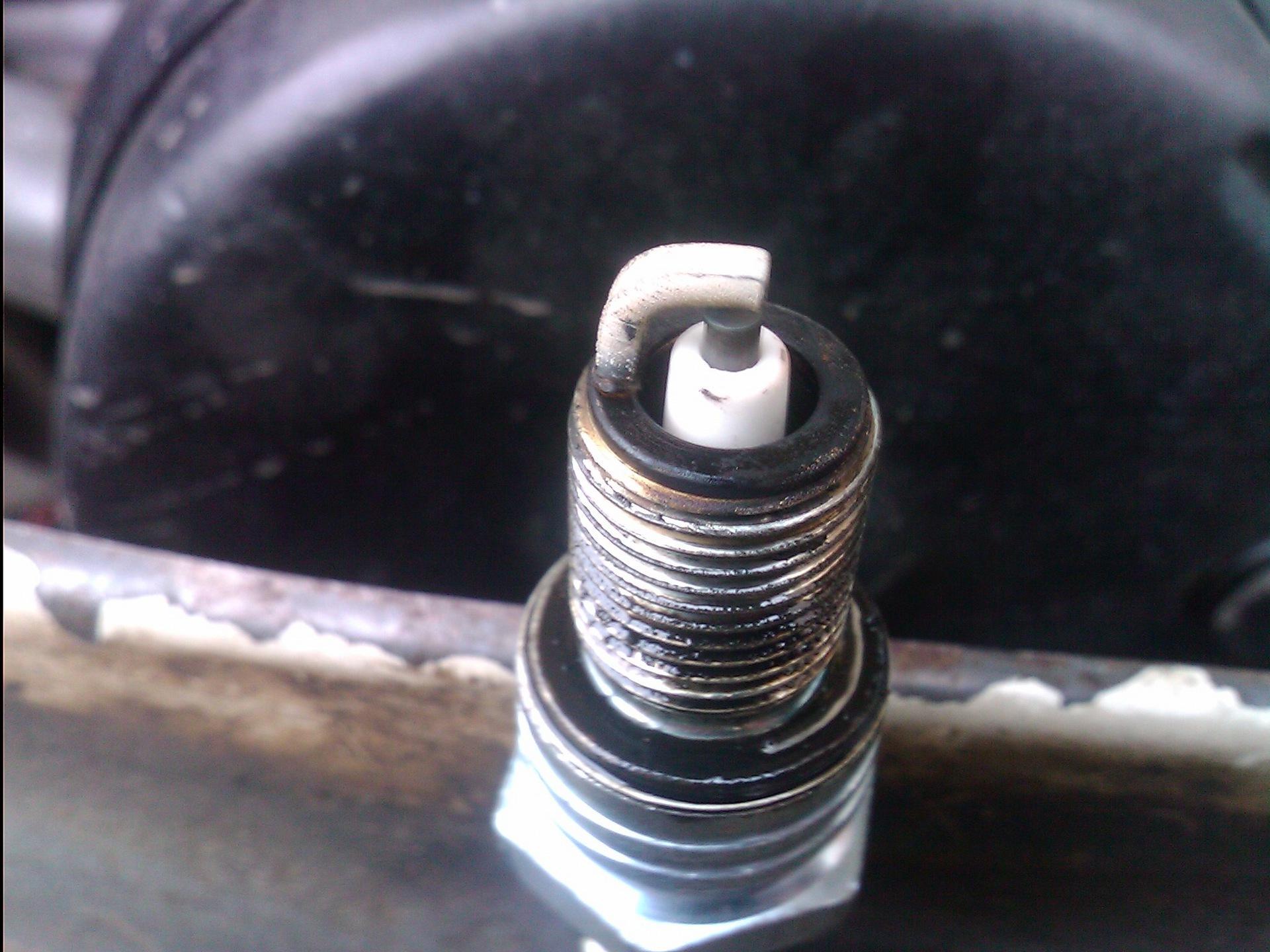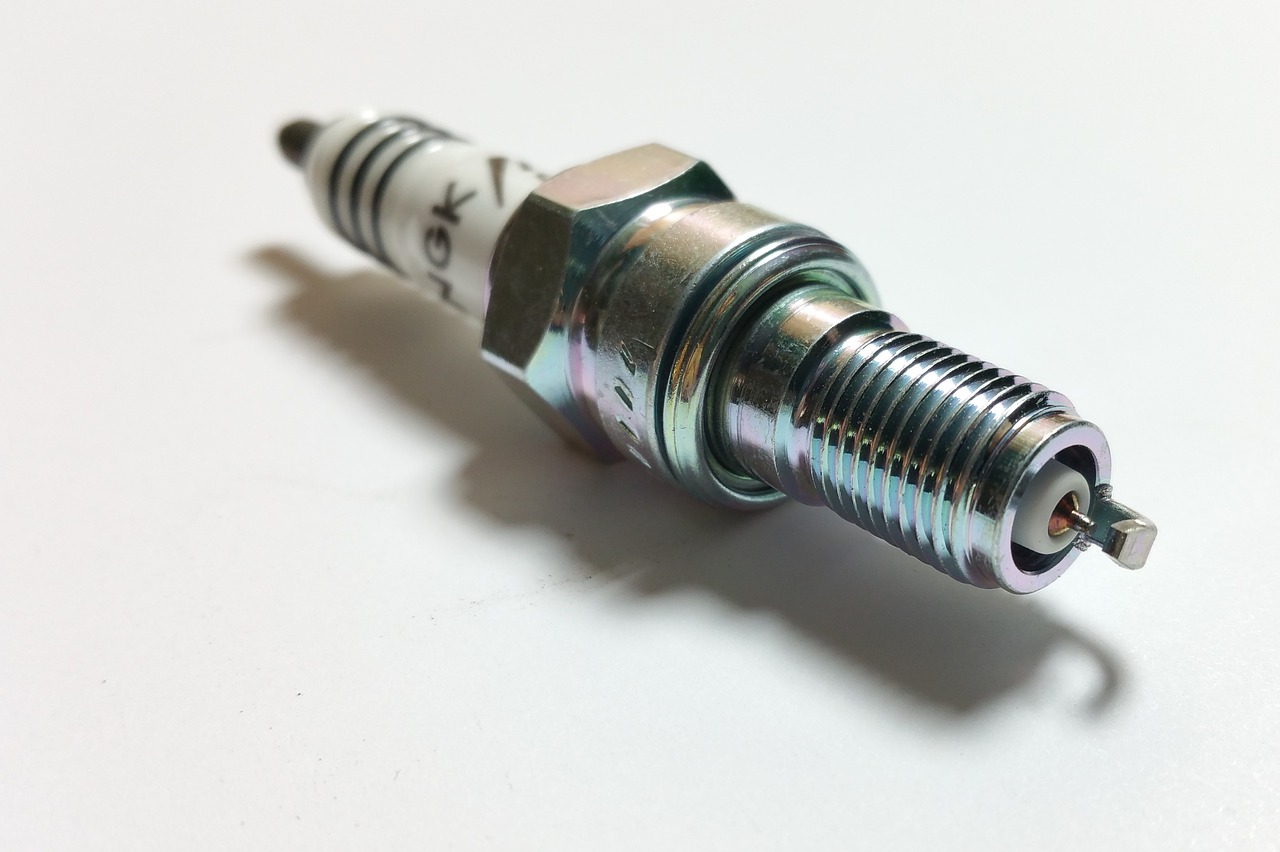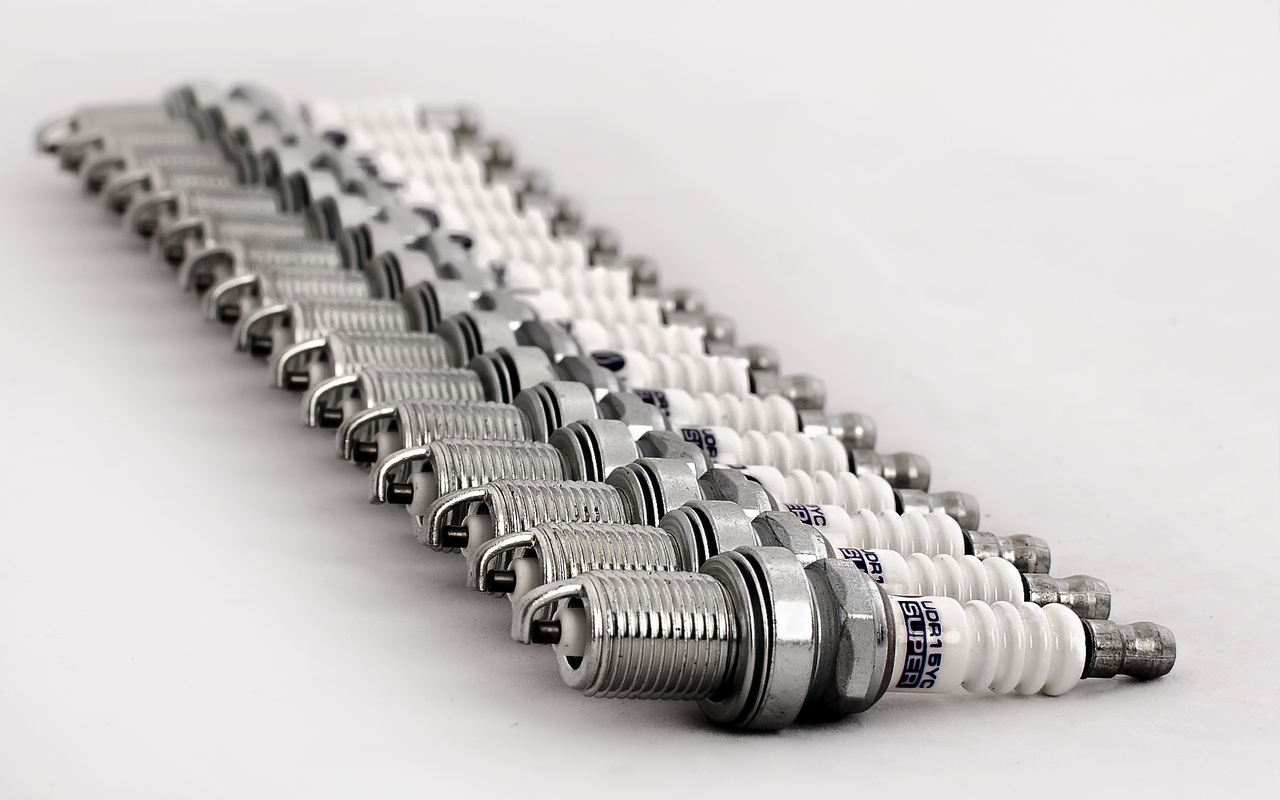
Why black spark plugs. The nature of soot, what to do
Content
The insulating part and the metal electrodes will overheat if you pick up too hot candles for the power unit. The fuel-air mixture (FA) then ignites ahead of time: the effect of detonation combustion is obtained, which sooner or later will disable the piston partitions, and even the bottom of the combustion chamber. The result will be a frightening color deposit on sparking components.
A spark from a miniature device ignites the air-fuel mixture in the internal combustion engine. It happens that when the engine is unstable, the engine is difficult to start, and also when a noticeable smoky trail appears behind the stern of the car, you unscrew the elements and suddenly find black spark plugs. It is important at the same time to be able to determine what the color, texture, nature of the substance says.
Black plaque - what is it
Black coating is nothing more than soot - a product of incompletely burned hydrocarbons (fuel, engine oil) and other organic matter. New spark plugs (SZ) are covered with a light coffee or cream film after 200-300 km - this is normal with a working car. However, a dark deposit on the metal or insulator parts is alarming.
Why are black spark plugs
The color scale of layers on ignition sources includes white, red, black shades. The last ominous raid is not terrible in itself, but as an indicator of malfunctions of components and parts of the ignition system, incorrect carburetor settings, and a number of other problems.
Carburetor
In cars with carburetor-powered internal combustion engines, the candles turn black when a failure occurs in the fuel and lubrication systems. Look also for the cause in the crank mechanism and timing.

How to understand the malfunction of the candle
Perhaps the idle speed is set incorrectly. But most often, ignition coils and insufficient insulation of armored wires sin.
Injector
The blackening of candles in a car with a point fuel supply is associated with changes in the composition of the fuel. Problems in the exhaust tract of injection engines or the timing belt will also affect the constituent elements of the ignition system with plaque.
Pay attention to your own driving style: prolonged engine overloads contribute to the formation of soot on candles.
The nature of soot will tell about the causes of malfunctions
Auto components are not always uniformly coated: one or more parts may turn black. The distribution of soot is also different. The element blackens one-sidedly or soot appears on the tip or wire.
Black coating on the skirt of the spark plug
The bottom of the candle body - the skirt - is always in the cylinder. And soot on this part suggests looking for reasons in the direction of gasoline quality and valve integrity.
Black spark plug in 4 cylinders
The spark is stable, and the candle in the fourth cylinder is covered with coal deposits - a typical disease of the domestic "classics".
The reasons:
- hydraulic pushers (if any) do not hold pressure;
- valve clearance is incorrect;
- the gas distribution in this working chamber is disturbed;
- crack on the valve plate;
- worn camshaft cams;
- hung saddle.
Remove the valve cover, measure the pressure in the problem cylinder at the end of the compression stroke.
Black candle in one cylinder
When the wire burns, the element is covered with soot deposits. Do not rule out a malfunction (burnout) of the cylinder itself.
Varieties of black soot
The nature of the soot may vary. Having unscrewed the element for diagnosing car malfunctions, while paying attention to the following features:
- Uniformity of soot. Soot can be concentrated on the electrode or be on one side of the insulator.
- Dryness of the plaque. Outwardly, it can give the impression of a wet mass, which is accompanied by a specific gasoline smell.
- Oiliness. Abundant vapors of lubricant in the cylinders impregnate the porous structure of the sediment. This is an unacceptable phenomenon.
- Velvety. An alarming sign is evidence of the rapid formation of soot, when the structure does not have time to compact.
- Shiny film. It accumulates for a long time, forming a dense texture.
Sometimes black deposits are combined with a red or brown crust.
Causes of deposits on candles
A specific diagnosis by the color of the build-up will not be undertaken by any experienced car mechanic. But working versions appear instantly.
Valve burnout
The high temperature loads in the combustion chambers destroy even the heat-resistant material of the valves.
Symptoms and causes of the phenomenon:
- “Knocking fingers” - the ignition is set incorrectly, low-quality gasoline;
- increased fuel consumption - problems with the timing;
- dynamic performance has deteriorated - as a result of burnout of parts, the required compression is not achieved;
- shaking appeared and the rumble of the power plant at idle changed - a misfire in the working chamber.
You will also hear "shots" from the muffler and pops in the intake tract. Candles are covered with soot.
Incandescence number mismatch
For each engine design, the manufacturer individually selects a set of spark plugs according to the glow number. The higher this indicator, the less the component of the ignition system heats up.
Hence the division of candles:
- cold - a large incandescent number;
- hot - the indicator is low.
The insulating part and the metal electrodes will overheat if you pick up too hot candles for the power unit.

Car spark plugs
The fuel-air mixture (FA) then ignites ahead of time: the effect of detonation combustion is obtained, which sooner or later will disable the piston partitions, and even the bottom of the combustion chamber. The result will be a frightening color deposit on sparking components.
Late ignition
If the engine is difficult to start, the power of the power plant has dropped, check if the car has a late ignition. The elements of the ignition system do not have time to warm up - which means that the fuel does not burn out completely.
Rich air-fuel mixture
The design of the internal combustion engine involves fuel assemblies of a certain proportion. If the latter is violated, the fuel burns out more slowly: the result is black SZ.
Clogged air filter
In a dirty filter element, the resistance to air flow is reduced: the fuel mixture is then enriched involuntarily. The result will be smoked spark parts.
Ignition system problems
In the event of a malfunction in the ignition system, the candle quickly becomes dirty, covered with carbon in the form of velvety soot. The age of the insulator in this case is short.
Excessive pressure in the fuel rail
Normally, the fuel sensor controls, and the fuel system itself corrects the pressure in the rail. But failures are possible in any node: then black auto-candles are guaranteed.
Poor self-cleaning
If the car is operated in the rhythm of short trips and frequent braking, then the candles do not have time to warm up to the self-cleaning mode. The parts will not be radically black: they will simply become dirty, as oil from the crankcase is added to the soot. Dirt can clog the gap between the electrodes: then the spark will disappear altogether or will appear every other time.
Loss of compression
The list of reasons why combustion chamber pressure drops at the end of the compression stroke is long. Here, the wear of the cylinders, coking of engine parts, depressurization of the valves. The listed troubles are the appearance of a dark growth on the ignition device.
Unsuitable gasoline
Low-octane fuels or sulfur-containing octane boosters usually result in unwanted spark plug deposits. Do not switch to high-quality fuel, the engine will stop.
defects
Unsuitable, defective or destroyed candles during operation make it difficult to ignite the fuel. Put in a new kit to forget about the problem.
What to do when soot appears
Deposits on candles are symptoms of breakdowns of the corresponding components, systems, assemblies. A simple replacement of the elements of the case cannot be fixed, therefore it is important to find the causes of the appearance of soot growths.
Oil deposits
Oily texture deposits indicate the ingress of lubricants into the working chambers. An unpleasant phenomenon is accompanied by a difficult start of the power plant (especially in cold weather), skipping cycles in the cylinders. At the same time, the engine twitches, and gray smoke comes out of the muffler.
Lubrication enters the cylinders in different ways:
- Bottom. Oil seeps through the piston rings. It is important to fix the problem immediately, without waiting for the capital of the internal combustion engine. Sometimes the decoking of the motor saves.
- Above. Oil seals wear out, which breaks the sealing of the cylinder head. The issue is resolved by replacing defective caps.
A thick oily resin layer with traces of unburned gasoline and mechanical impurities in the SZ indicates a breakdown of the working combustion chambers. Predictable consequences: engine tripping, a rapid drop in unit power.
Carbon deposits on the insulator
Inexperienced motorists change the part, noticing traces of soot on the insulator. Meanwhile, deposits in combustion chambers are a natural process. When engine speeds soar, particles of soot break off the pistons and stick to the ceramics of the spark plug.
The characteristic black-red coating on the insulator is formed from a large amount of fuel additives containing metal. The part is covered with metallic conductive deposits that impair sparking. This auto-candle will not last long.
